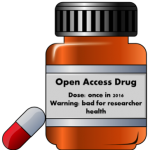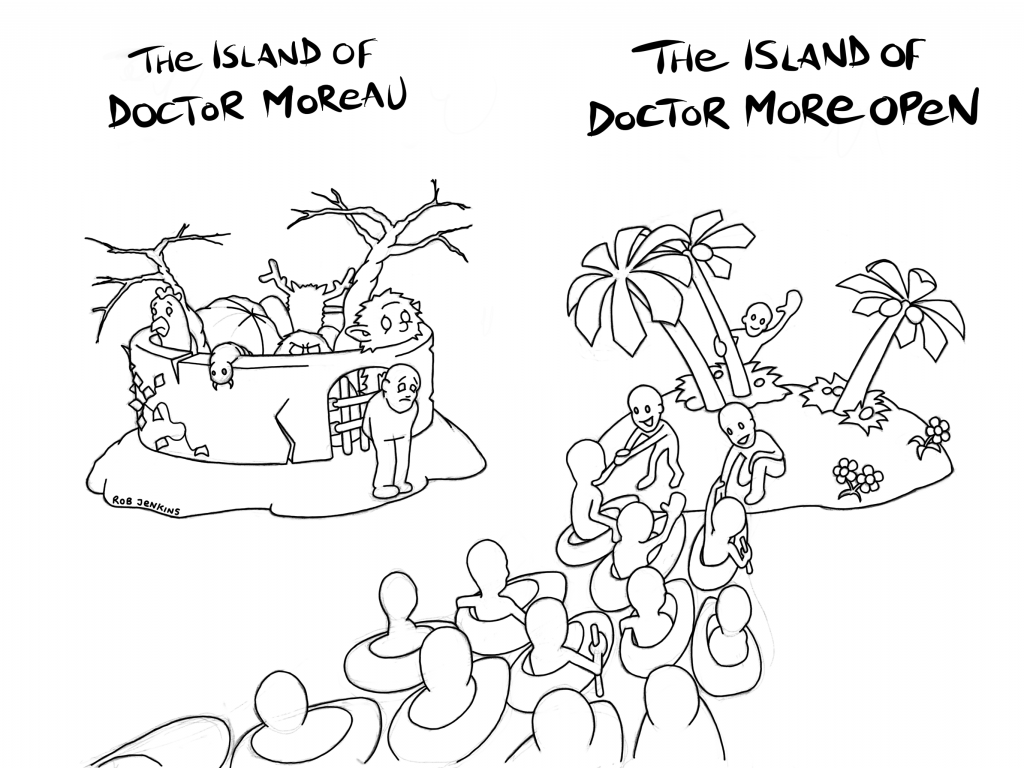
[Editor: We have something a bit different for you today. A guest post from Eva Alisic from the Global Young Academy, who has recently launched a great new initiative called the More Open Access Pledge.]
One of my friends was diagnosed with depression and put on medication. She couldn’t access key research articles about the drug, nor read the latest evidence on possible alternatives like psychotherapy.
Despite significant movement towards Open Science, many patients, practitioners, policy makers, and the broader public still cannot access the latest evidence. And surprisingly, the same applies to many researchers, especially in low-income countries.
For example, in 2015 only 46% of dentistry papers published in 2013 were accessible without any subscription. A similar figure applies to articles on post-traumatic stress.
This is a problem!
- Patients should be able to verify information about their condition, its treatment and any risks involved
- Naturally, practitioners need access to the evidence to be able to provide evidence-based care
- Policy makers need it to develop regulations that achieve best patient outcomes
- And researchers should be able to build on the work already done.
Oh, and Elves can only give bite-size overviews of the latest research if they get the chance to read it…
A bad idea?
With the Global Young Academy and a group of scholars from around the world, we’ve started a pledge for More Open Access. You can read more below and sign-up here.
The pledge’s goal is to push for wide availability of research findings. We’ve designed it to be feasible for many: we’re hoping to spur not only conversation but mostly action.
It turns out not so easy. I’ve been reaching out to Heads of university departments, and while a few respond positively, many do not. I either hear back that it’s a bad idea (because it endangers researchers’ careers) or that the issue is already solved (because the UK and Canada have regulations that one should deposit papers in a repository within 12 months post-publication).
The former can be addressed and the latter is great, but not sufficient.
Open Access itself won’t endanger any careers. It’s the quality of the publishing outlets and their costs that need to be addressed. There are already a few good quality, relatively low-cost options such as PeerJ, and promising archives such as SocArXiv. Hopefully more will emerge.
Our pledge doesn’t ask researchers to go Open Access all the way. It asks for the submission of one manuscript in the second half of 2016.
The UK and Canada solutions are an important step for research availability and hopefully one in the right direction but 12 months is really too long. As an example, the American NIH require papers to be available directly after publication, and the Wellcome Trust has just launched an open access platform. It would be great to see these initiatives across disciplines, funders, and countries. Health repositories currently host a maximum 63% of the articles they could host, so there is still work to do.
So what about this magic pledge?
Joining the More Open Access Pledge means submitting at least 1 manuscript to a quality Open Access outlet by the end of the year. The outlet can be a peer-reviewed Open Access journal or a widely used pre-print server without embargo. Articles with predatory publishers (see Beall’s list) or on your own website wouldn’t count, for quality and retrievability reasons.
We’d be delighted if you join us! You can sign up here.
We’re looking for ways to help promote the articles that are published as a result of the pledge.
How to help?
Whether you are a patient, practitioner, policy maker, elf, or otherwise committed citizen, you can help the open access movement. Please encourage the researchers in your environment to sign up to the pledge.
The evidence base should be in everyone’s reach.



Making research findings available: join the More Open Access Pledge https://t.co/SLSWLhpJjn #MentalHealth https://t.co/CZ1WjPKojh
Today @EvaAlisic from @GlobalYAcademy
Calls for researchers to sign the More Open Access Pledge
https://t.co/dwja4qWWwk #ESOF16
Researchers!
Should you publish more #OpenAccess?
Sign the More Open Access Pledge
https://t.co/dwja4qWWwk #ESOF16 https://t.co/6AEMs8cm0T
Making #research findings available: join the More #OpenAccess Pledge https://t.co/9mLKYa6ohg from @Mental_Elf
https://t.co/flZf8GKTVF Please get researchers you know to sign the pledge or ask your pdoc to ask them to do so.
Don’t miss: @EvaAlisic from @GlobalYAcademy calling for researchers to sign the More #OpenAccess Pledge https://t.co/dwja4qFlEM #ESOF16
Making research findings available: join the More Open Access Pledge https://t.co/nOLid9Kkik via @sharethis